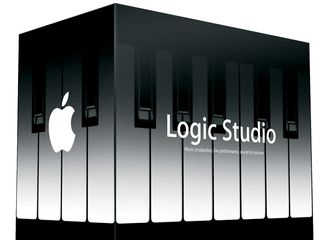Apple´s Logic Pro 8 is certainly a much more accessible beast than the versions that preceded it, but this isn´t to say that all of its most useful features are immediately obvious.
Fortunately for you, there´s no need to go searching for all the new stuff - MusicRadar is on hand to reveal some of the improvements that you might have missed…
1. Before you flatten a comp, you can at any time change the takes used. Look at a folded Comp Track and you´ll see marker lines showing the edits. Right-click between them and you´ll get a drop-down menu of all the available takes solely for that section. Simply select the section you want to swap for the currently active one.
2. To make use of a standard plug-in on a surround signal, Logic uses a multi-mono architecture. This system has an assignable grouping option within the plug-in so you can process channels either together or individually. Start with a surround channel and load a multi-mono plug, then open the Configuration option in the title bar to set grouping.
3. Logic now has a Junction tool for adjusting the crossover point between audio parts. However, you´ll find it only works when the two blocks are butted together with no gaps. If they´re not already like this, try using the ‘Tie objects by length change´ option in the Object menu, then position the Junction tool at the top of the join.
4. By default, the Inspector includes basic region info and the twin faders. However, you might be wondering how to find the in-depth Parameters box previously available as a floating window. Go to the Arrange page View menu and check the Extended region parameters option to make it visible in the Inspector.
5. Tracks now have a full-on setup window of their own. Head for the Configure track header option in the View menu. Here you can choose how tracks are named and which buttons are visible.
6. Drawing curved automation in Logic has always required the automation tool, which also doubled as the select tool, requiring you to switch functions in the toolbar. Now these two tools each get their own cursor. In the Tools menu, choose either Automation Select or Automation Curve.
7. To make the most of the new workspace, it´s worth learning a few of the new shortcuts, particularly those for opening and closing the various editors. Start with X for the Mixer, I for the Inspector and O for the Loop Browser. Also note that edit window scaling is retained.
“Viewing audio waveforms in the Arrange screen has always been tricky when levels are low, but Logic Pro 8 has a new waveform zoom feature for visually magnifying audio.”
8. On the subject of the new workspace, get a few plug-ins on the go and things can easily get pretty busy. A quick solution now comes in the form of the shortcut Show/hide all plug-ins. This has a toggle key command set to V by default.
9. The editor windows have access to up to three tools each, just like the Arrange window. However, they´re context-specific. Select the Hand tool in the Mixer editor to lasso as many channels as you like in order to make simultaneous changes to all of them, including loading the same plug-in into the whole lot at once.
10. Viewing audio waveforms in the Arrange screen has always been tricky when levels are low, but Logic Pro 8 has a new waveform zoom feature for visually magnifying audio. Activate it by clicking on the ‘wave´ icon at the bottom-left of the arrange window, and hold down the mouse button to open up the zoom slider.
11. Hyperdraw data in the Piano Roll editor (previously known as the Matrix editor) is now more accessible than ever. Click the button at the bottom left-hand corner and you´re away.
12. Logic Pro 8 offers a much simpler route to its automation features. With automation visible, right-click on a track to bring up a menu giving access to all automation parameters and settings, as well as the rather useful Snap automation option. This follows the Arrange window Snap setting and makes musically aligned automation edits effortless.
13. One thing still not available in Logic Pro is the facility to non-destructively set volume offsets for audio regions. However, there is a key command for ‘Create 4 nodes at region border´, which can be used with volume automation to accomplish effectively the same thing. You´ll have to assign your own key for it, though, as it doesn´t have a default.
14. Logic Pro now has more Channel Strip settings than ever and access to them simply couldn´t be easier. As well as using the Library to get to them, you can also Alt+click on the name field of any mixer channel, which brings up your entire Channel Strip settings menu hierarchy, categorised by instrument and processing style.


